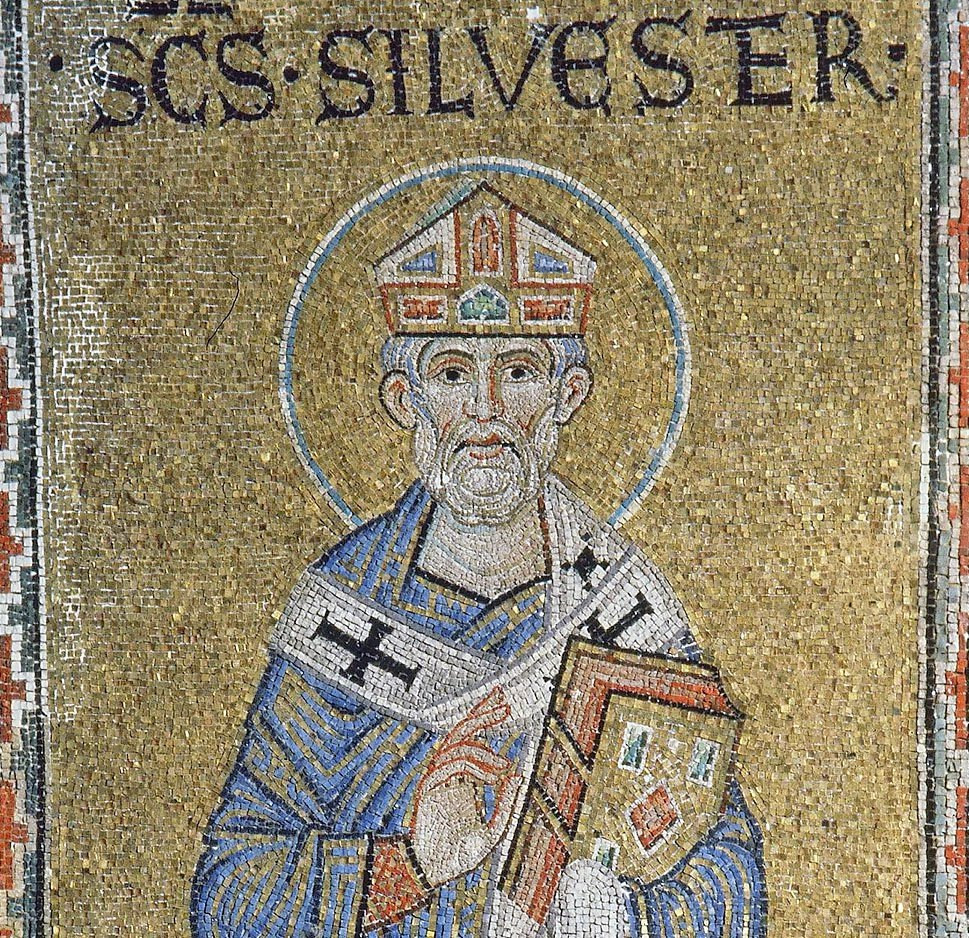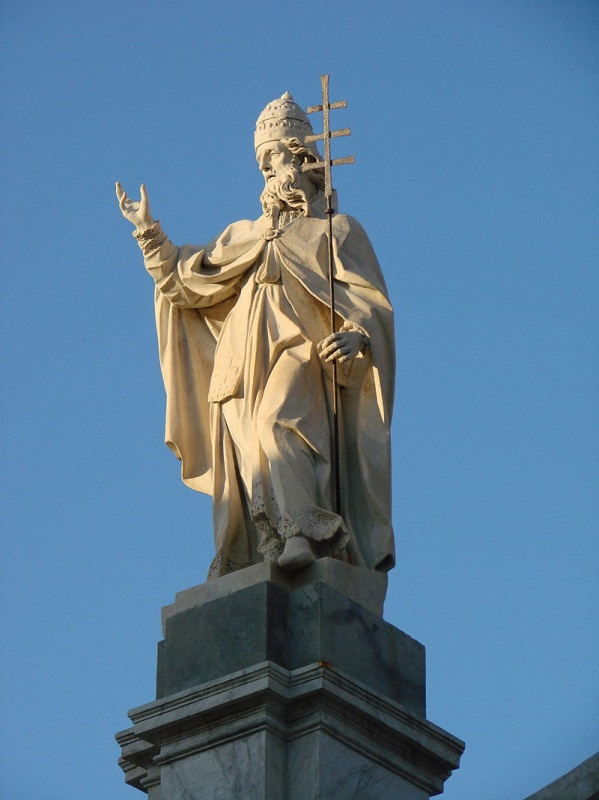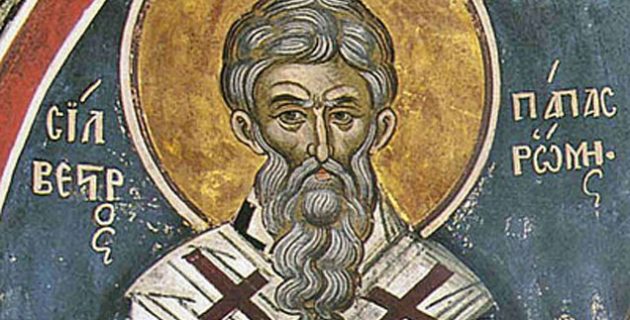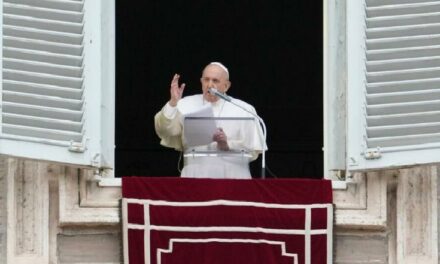Pope Sylvester led the Church from 314 to 335, first after the end of the persecutions.

his predecessor, Pope Miltiades , Rome was freed Maxentius when Constantine the Great defeated him. Sylvester was revered as a confessor, as he steadfastly confessed Christ in the last persecution. In the first period of free religious practice, men who were religious during the persecution were elected and consecrated as bishops.
The most important activity of the New Year's papacy was the organization of the Roman Church and the formation of liturgical celebrations.
Pope Miltiades received the first donation from the emperor, when Constantine made the Lateran Palace available to the pope. The fathers of the council announced for October 313 could already gather in this palace, and the popes lived here until the 14th century and exercised their papal power from here.
Constantine ordered the construction of a large basilica next to the Lateran Palace, which later received the name "mother of all churches". The Lateran Basilica was consecrated by Pope Sylvester in 324.
During the years of his papacy, the first basilica over the tomb of St. Peter on the Vatican Hill began to be built, and a smaller basilica was built over the tomb of St. Paul along the road to Ostia.

Statue of the Holy Pope on the facade of the Church of St. Sylvester in Pisa, by Giovanni Antonio Cybei (18th century)
We have no written memories of New Year's Eve. We don't even know about a council that he held in Rome. In the light of legends, the figure of the humble New Year's Pope is nevertheless of unique importance in world history.
According to legend, the emperor, after winning the victory over the claimant Maxentius and conquering Rome, once again began to persecute the Christians. That is why he was guilty of leprosy. During his illness, he had a dream one night: the apostles Peter and Paul appeared to him and told him that he could not hope for healing anywhere else, except at Szilveszter, who knew of a miracle-working spring whose water would heal all who dived into it.

Maso di Banco: Pope Sylvester baptizing Emperor Constantine, (Basilica of the Holy Cross, Florence around 1335)
During the persecution, Sylvester hid in a cave on the Soracte mountain. The emperor immediately sent messengers to him and asked him to come back to Rome. Sylvester returned and began to teach the emperor about Christianity, had him open the prisons in which the Christian prisoners were kept, and then led him to the baptismal pool. There the emperor recovered his health. Out of gratitude, he immediately issued laws for the benefit of the Church and expressed his gratitude for the healing with large gifts. During the construction of one of the churches, he himself picked up a hoe and carried twelve baskets of earth on his own shoulders.
Pope Sylvester died on December 31, 335. He was buried in the Priscilla Catacomb along the Via Salaria. Its celebration has been celebrated since the 5th century.
Source: István Diós: The life of the saints/Hungarian Kurír
Cover image source: cultura.hu)












